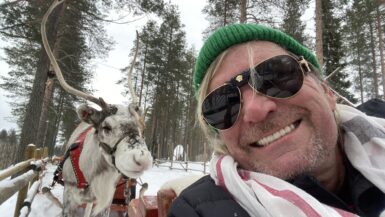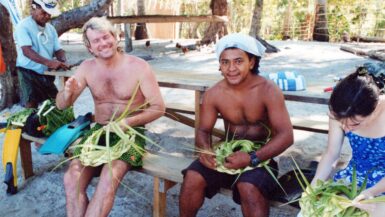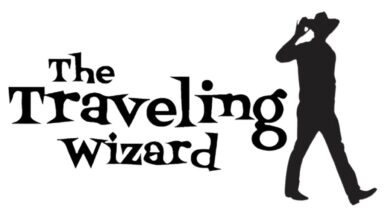I’d been waiting for immigration to wave me through, but the police seemed much more interested in praying or looking at their phones for it even to register that I’d been waiting on them for nearly an hour. I was the last one in the airport and my bag was lying 50 feet away on the other side of the stanchions. They joked with each other in Arabic, I tried to look nonchalant, but was puzzled why I hadn’t been allowed to officially cross the threshold. Suddenly whatever call we’d been waiting for came through. I wasn’t a spy after all. I walked past the rope, grabbed my bag and checked off my 203rd country.

Mauritania is not a tourist destination. Maybe that’s why there was some resistance to my visit. The capital’s airport lies about half an hour from Nouakchott and the road is flat, treeless and with the exception of a few random tents, there’s nothing. Once you pull into the city, you’re no longer alone. With cars that look like they’re from a Mad Max movie, they frantically try to pass each other and turn where there’s no traffic signals of any kind. We bumped into two different cars on the short drive and everyone involved acted as if it was a normal consequence of rush hour.
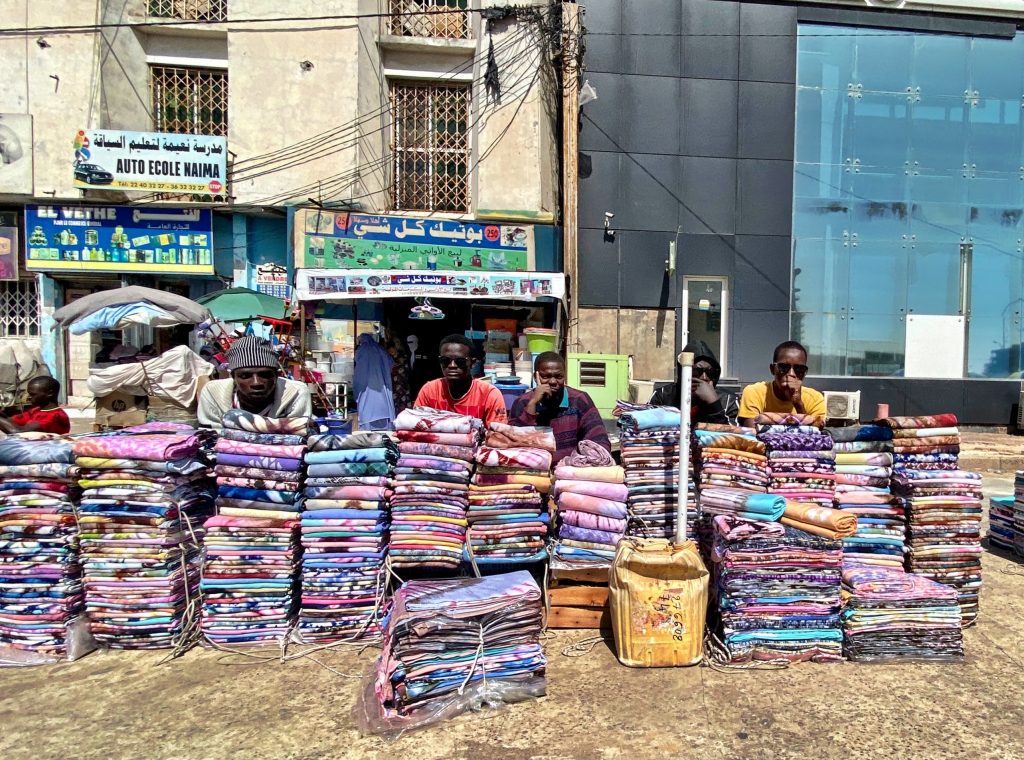
I’d read terrible reviews about this country. Severe warnings alluded to the possibility of being robbed, raped or kidnapped. I am seldom nervous about a destination, but it seemed that any foreigner could be a potential target in this country. These claims turned out to be completely false. The country is quite safe unless you’re in a war zone on the border of Mali or somewhere else sketchy. The best advice is to ask the locals and not believe everything you read about misunderstood countries.
Mauritania is usually visited by tourists for one of two reasons; either to discover its Sahara desert attractions in the mid-northern area of the country or as a stopping point for travelers driving from Europe/Morocco to Senegal or more southern destinations. Few linger at the capital, but that’s exactly all I had time for.
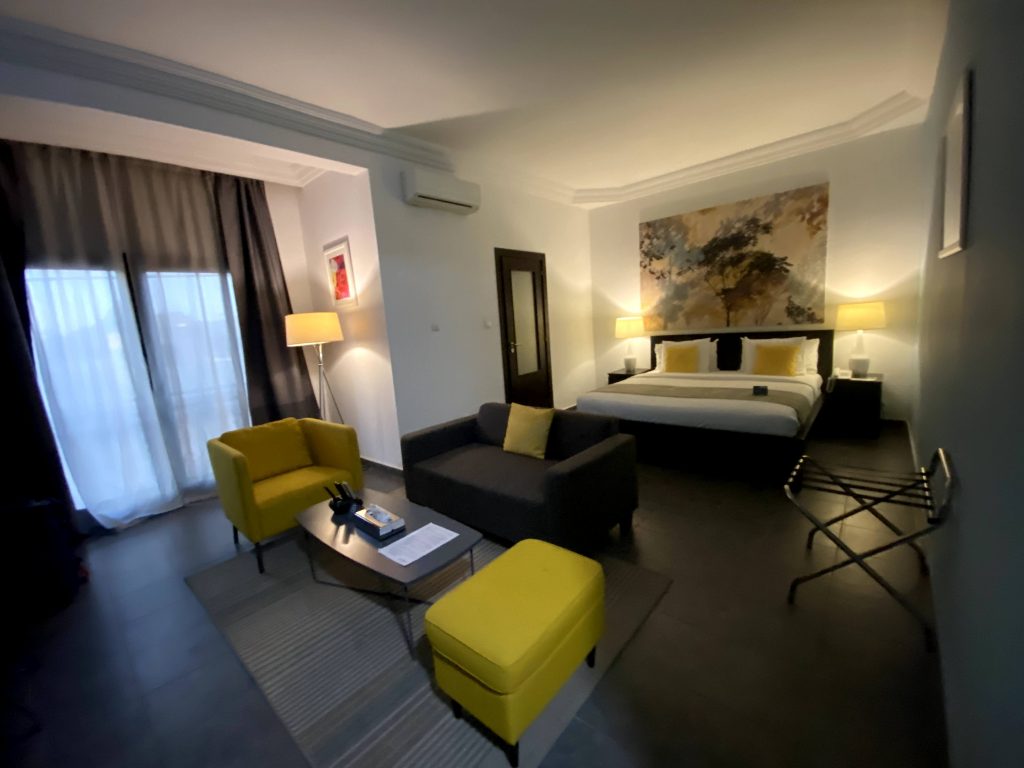
I stayed at the Semiramis Hotel which made my visit incredibly easy. The rooms are very affordable, spacious and modern, there’s security, a great restaurant, English speaking staff and it’s boutique style décor and well thought out layout make it a gem. It’s right in the center of town and they offer a free shuttle to the airport as well.
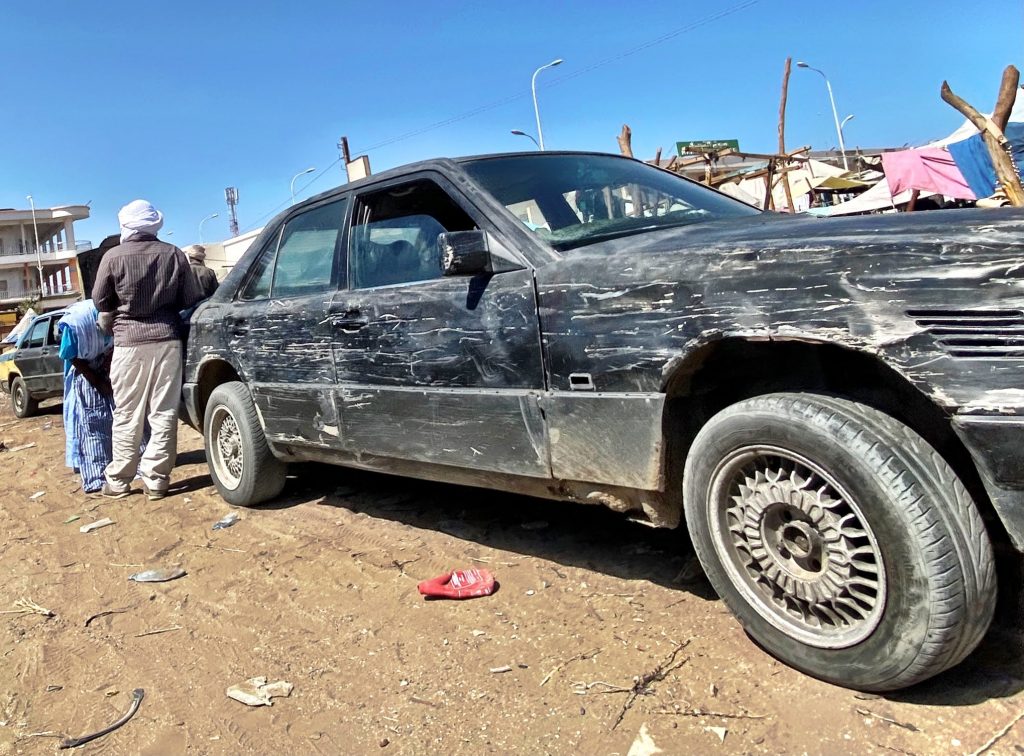
You can try to flag down a battered taxi if you’re going a long distance but I soon discovered that taxi drivers don’t know how to read a map, speak anything other than Arabic and French and are accustomed to a ride sharing setup where you’re with a bunch of strangers going random directions. In the end, I decided walking was my best option. There’s not much to do in this town so walking was the best way to experience the small wonders.
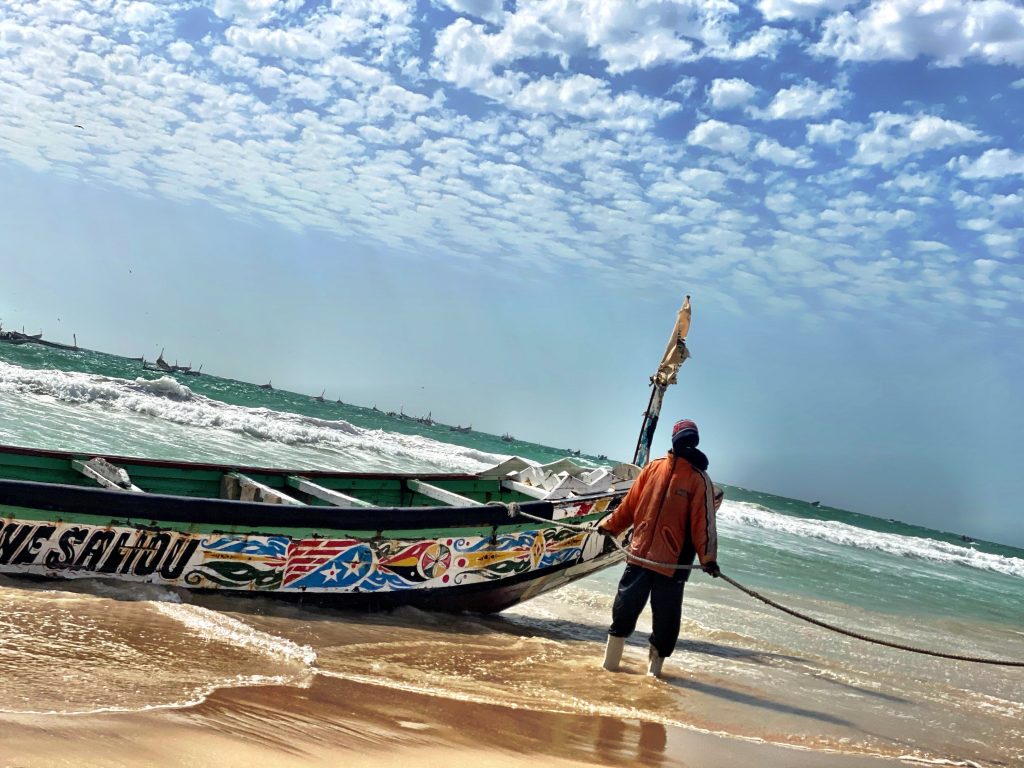
I did manage to wrangle a taxi ride one-way to the Port du Peche, the nucleus of all things related to the fishing industry in town. It’s a frantic combination of fish market and pirogue landing. Hundreds of Africans line the shores as boats venture in and out with their catch. It’s certainly an overwhelming site with locals haggling, fish being hacked up and boats trying to land in the waves without capsizing. There was even a camel sitting in the beach. Fruit, bread and other items are also sold near the fringes of this spectacle.
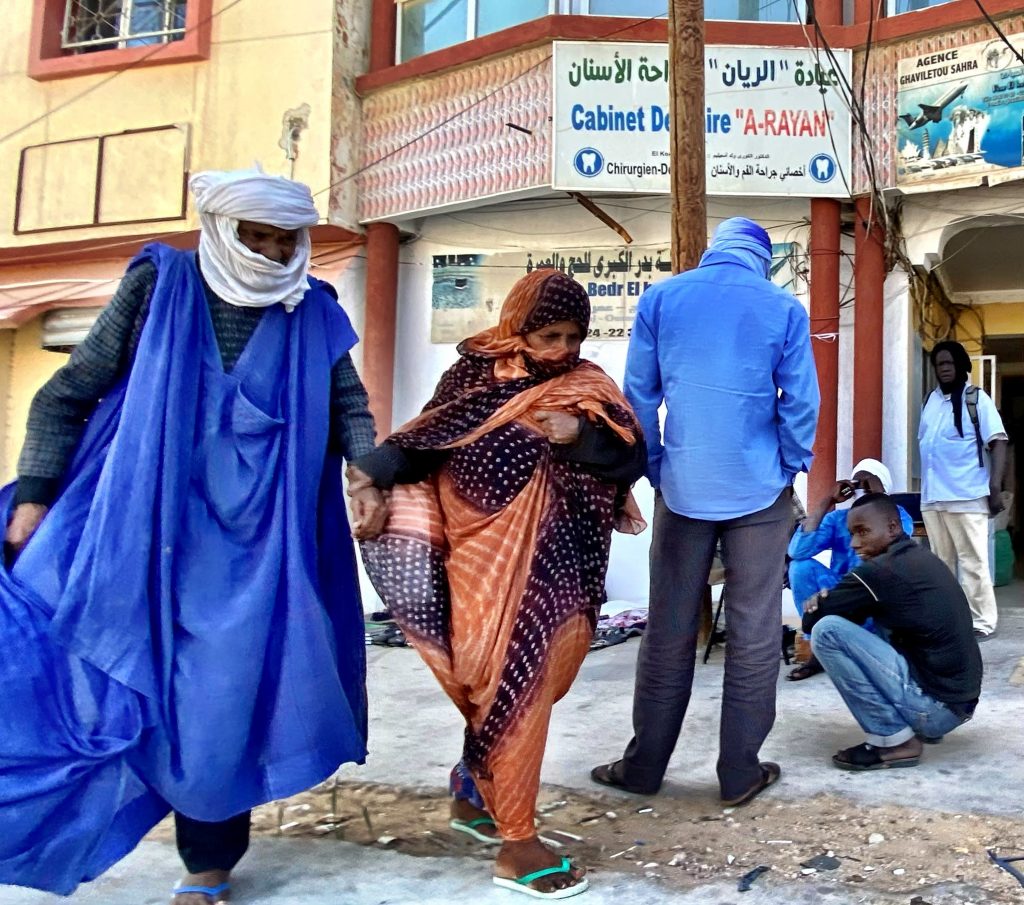
Mauritania is the kind of place that makes one feel uneasy about photography. There are few phones visible and no one seems to be taking pictures. I saw no sign of people using apps, social media, or as I mentioned previously, maps. Rather than whip out my iPhone and start snapping images, I have several stealth tactics that allow me to take photos without creating any attention to the act. Maybe I was reading thecrowd wrong, but I reserved my phone use to the least obvious as possible.
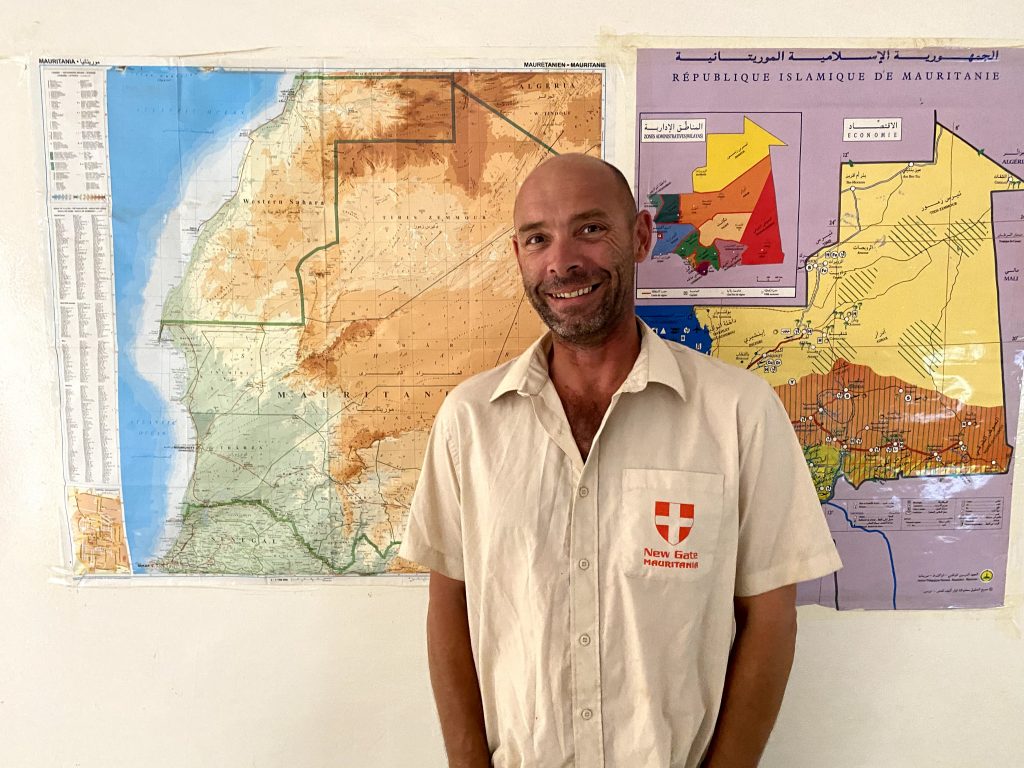
I discovered another great lodging option in my walk back to the hotel. At only $15/ night Le Triskell is a steal of a deal for no frills lodging in Nouakchott. Set up like an open air hostel, there’s a café, computers, WIFI, and a relaxed vibe that seems like an oasis from the dust and noise on the other side of the wall. The real value in the property is being able to chat with Sebastian, an English speaking Frenchman who knows where to go and how to get there. With his map arsenal, he helps travelers understand the top sights, how to get to them and where to stay. This is one of the biggest challenges for destinations like Mauritania: finding current information and having another adventurer help you find solid travel options.
If I had another week, I would have organized my Sahara desert trip right there and then. There’s UNESCO sites and amazing geological wonders starting just 5 hours northwest of the capital. Sebastian also mentioned an interesting return trip using a mining train loaded with iron ore as transportation.
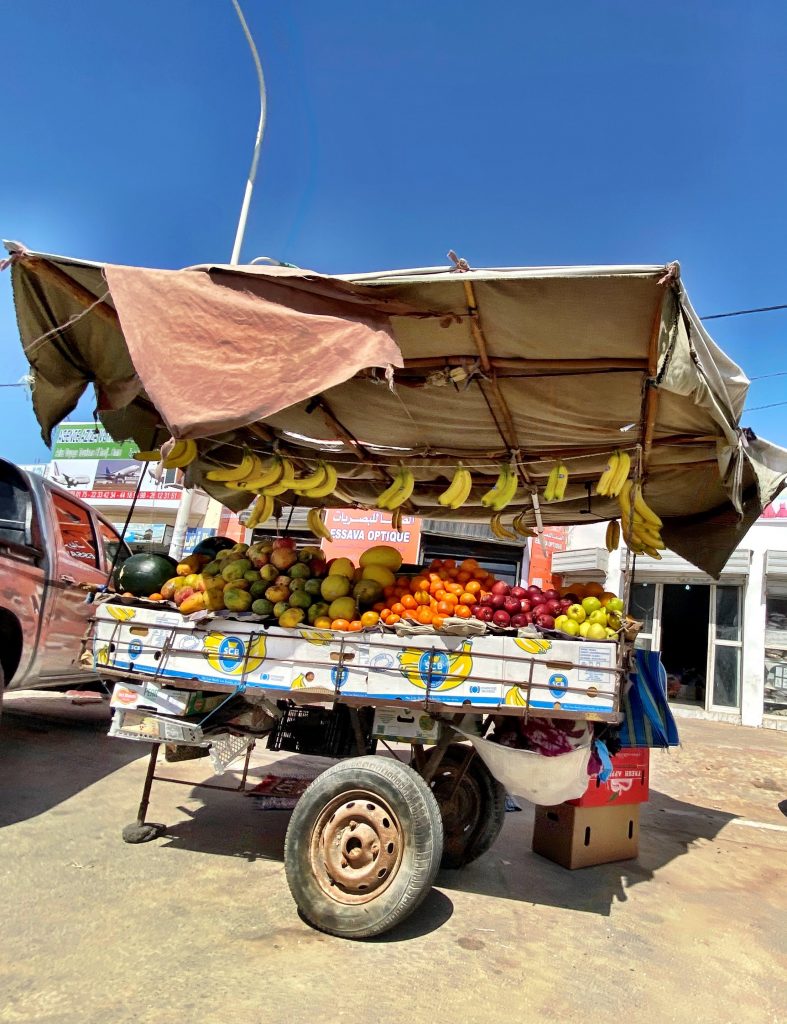
The main market of Nouakchott sells everything from bright colorful cloth to juicy mangos and navel oranges. There’s few souvenir shops in this town, but you’ll find at least half a dozen on Rue Monotel. They mostly sell souvenirs from neighboring countries but there were several items home grown in Mauritania.
Since the country of Mauritania is between Senegal and Morocco, there’s food influences from both places. You’ll see Moroccan couscous and tagine as well as Senegalese’s national dish, boudienne. No selling of alcohol is permitted in the country, so you won’t find any bars. Two days is all you need in this town. Once you meet a few of the locals and learn of the great adventures a little further east, you might want to add it to your list like I have.



